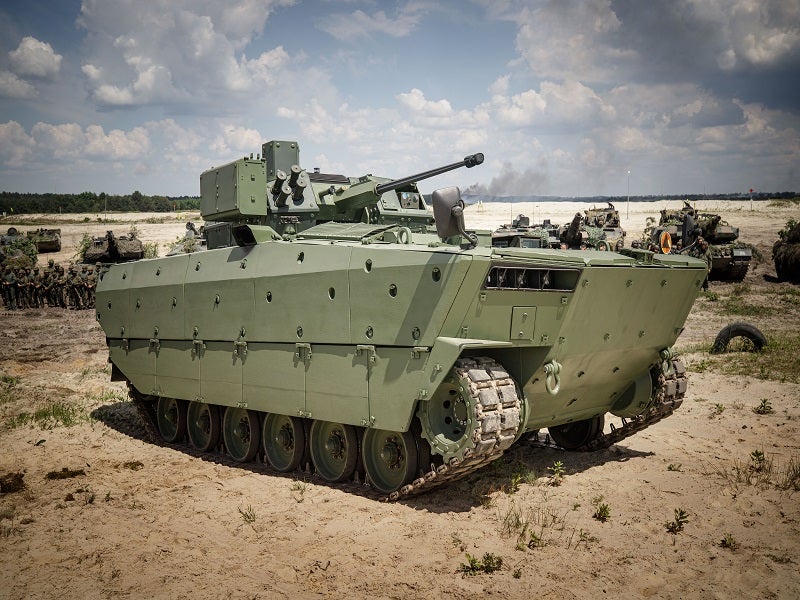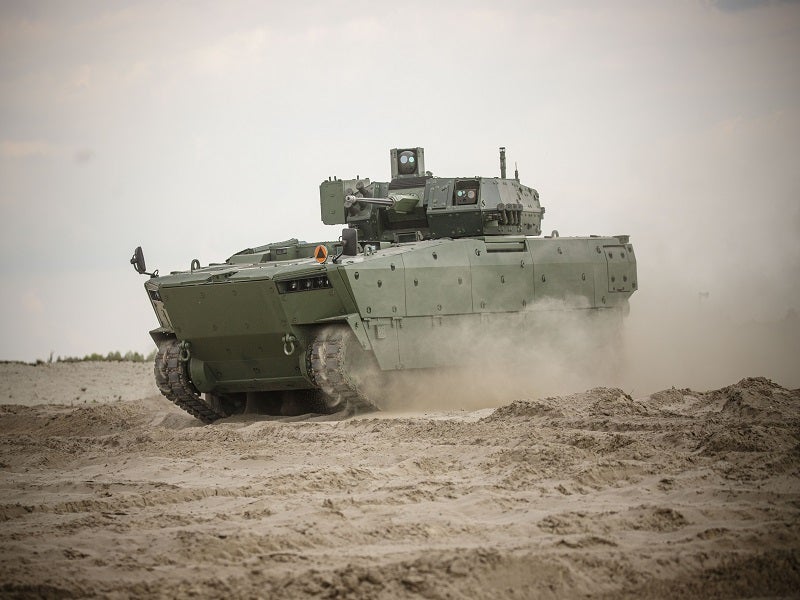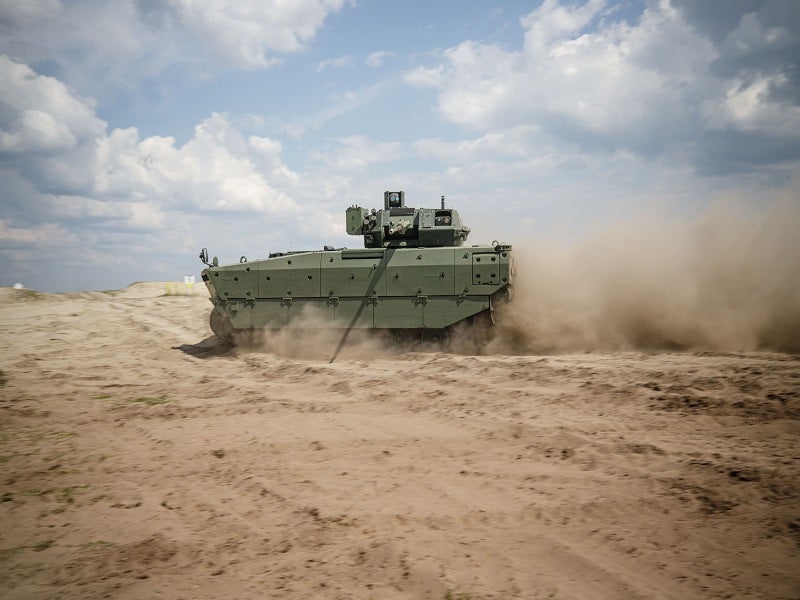Borsuk (Badger) is a modern tracked infantry fighting vehicle (IFV) intended to safely transport the crew and dismounted soldiers on the battlefield. It is manufactured by a consortium led by Huta Stalowa Wola (HSW), a subsidiary of Polish Armaments Group (Polska Grupa Zbrojeniowa, PGZ).
The consortium members include OBRUM, Rosomak, Wojskowe Zakłady Motoryzacyjne, Wojskowe Zakłady Inżynieryjne, Wojskowy Instytut Techniki Pancernej i Samochodowej, Wojskowe Zakłady Elektroniczne, Wojskowa Akademia Techniczna, Politechnika Warszawska, and Akademia Sztuki Wojennej.
The amphibious IFV is intended to replace the Soviet-era BWP-1 IFV fleet in service with the Polish Armed Forces.
Borsuk (Badger) amphibious IFV programme details
HSW commenced the development of the Borsuk IFV in 2014. The programme is partially funded by the National Centre for Research and Development (NCRD), under an agreement signed with the consortium leader HSW.
A full-scale model of the Borsuk IFV was presented at the MSPO international defence exhibition held in Kielce, Poland, in September 2018, while a prototype equipped with the ZSSW-30 remote weapon turret was showcased at the MSPO exhibition in September 2019.
The preliminary tests including swimming and firing trials of the vehicle are scheduled for completion by the end of 2021. The qualifying tests are expected to take place in 2022. The serial production of the Borsuk IFV is anticipated to commence in 2024.
Borsuk infantry fighting vehicle design and features
The Borsuk IFV will feature a composite rubber track (CRT) system supplied by Soucy Defense. Each track will integrate a continuously cased rubber band structure made of composite materials and steel cord. The CRT system will reduce vibrations and weight when compared to conventional steel tracks.
The hull of the IFV can be configured into multiple versions such as infantry fighting vehicle, command post vehicle, and medical evacuation vehicle.
The vehicle is also designed to easily overcome all types of water obstacles and operate in difficult terrains and harsh weather conditions.
Armament aboard Borsuk IFV
The vehicle is equipped with ZSSW-30 remote-controlled turret system (RCTS) integrated with a 30mm canon, a 7.62mm machine gun, and an anti-tank guided missile (ATGM) launcher system. The turret was jointly developed by HSW and WB Electronics, making it the first indigenously manufactured unmanned tower construction.
The RCTS allows the IFV to engage enemy light armoured targets along with allied enemy infrastructure in adverse climatic conditions.
The turret is equipped with independent biaxially-stabilised observation devices and a standby observation device with a wide-angle periscope. It also integrates an OBRA-3 SSP-1 laser radiation detection system, eight smoke grenade launchers, and a FONET internal communication system.
The turret can fire in automatic and emergency modes and support the futuristic programmable ammunition (ABM). It also has two working modes, namely hunter-killer and killer-killer.
In hunter-killer mode, the commander observes the area around the IFV for the target and can point it to the gunner through the hunter-killer mode upon finding the target. The turret then automatically aligns itself towards the direction of the target.
The killer-killer mode is preferred in the instances where the commander doesn’t have much time to inform the gunner about the target.
Engine details
The Borsuk IFV is powered by a MTU 8V199 TE20 diesel engine, which has a rated power of 530kW (720bhp). The power-pack for the Borsuk IFV was indigenously developed by Wojskowe Zakłady Motoryzacyjne. It integrates engine, gearbox, and power supply components.
The amphibious vehicle is propelled in the water by two water jets mounted at the rear side of the hull.






